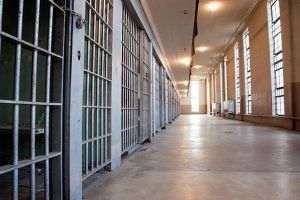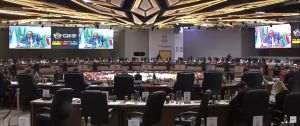Born from the ashes of the financial crisis of 2007 - 2008, the second largest bull market in history became ten years old on Saturday, as the current historic cycle represents the second biggest economic expansion in the history of the United States, after the one in the 90s.
The "bottom" of the S&P 500 bear market or the post-crisis low, was reached on March 9, 2009, when the index closed at 676.53 points, while the intraday low on that day was de 666.79 points, came to be known on Wall Street as the "devil's bottom", Reuters writes.
Together with the crash of the financial assets, home prices were also collapsing, after the crash of the speculative bubble in the real estate sector.
In order to fight the global financial crisis and the subsequent recession, the Federal Reserve (Fed) has established lines of credit with the main central banks of the world through which it has pumped hundreds of billions of dollars in the global financial system, has cut the policy rate to zero and has begun, in March 2009, a massive asset purchase program, which came to be known as «quantitative easing».
The extraordinary measures imposed by the Fed have kept up the bull market, while the tax cuts of the Trump administration in 2017 have contributed to keeping the positive flow going, according to Reuters.
The beginning of the recovery was announced by CNBC anchor Mark Haines, who, on March 10 2009 was saying: "I am going to take a chance here, but I think we've hit a bottom".
The Dow Jones Industrial Average closed the day of March 9th, 2009 at 6,547.05 points, with a harsh collapse of 54%, from an all-time high of 14,000 points, reached on October 2007, according to CNBC.
The announcement made by the Fed on March 18th, 2009, concerning the launch of the quantitative easing program caused a 9.5% rise by the end of March 2009, for the Dow Jones to post a 100% rise from the march 2009 low, over the next three years, according to CNBC data.
Bob Diamond, former CEO of British bank Barclays, and current manager of Atlas Merchant Capital fund told CNBC last weekend: "At that time, (ed. note: March 2009) I was not as optimistic as Mark (ed. note: Haines). It is difficult to explain how deep and dark was that year's correction. Probably the harshest since WW2. S&P 500 had fallen 60%, over just three months, and funding for the financial institutions was difficult all over the world".
Compared to their prices on March 9th, 2009, cosmetics retailer Ulta Beauty, listed on the Nasdaq, has achieved a return of 7,000%, the highest on Wall Street, followed by Netflix, which saw its stock rise 6,000% over the last ten years. The current annual return of S&P 500 is currently about 15%, according to Reuters.
Referring to the future of the current bull market, Bob Diamond said: "I think that in the medium and long term, taking into consideration the strength of the private sector, I think that on one hand, by mid-2019, the interest rates will be raised again (ed. by the Fed), and on the other hand, we have a few warning signs, to a great extent applying to debt, considering the boom of lending, which has been a direct consequence of the monetary policies instituted by Ben Bernanke in the United States and by the ECB and Bank of Japan".
After the 19.8% drop between September 20- December 24 2018, the S&P 500 benchmark saw a recovery, amid the change in monetary policy of the Fed which has announced, in the beginning of the current year, a period of "patience" when it come to the raising of the interest rates, and is now 7% below the all-time high of 2930,75 points reached on September 20th.
• Unlike the American market, the BET is way below the 2007 high
In Bucharest, last month marked the ten-year anniversary since the BET reached the low of 1833.18 points, the end of the crash started by the 2007 financial crisis, down from 10857.71 points, which it had reached nearly 12 years earlier, in July 2007.
Still, unlike the indexes of the developed stock markets, which have long ago exceeded the highs they reached in 2007, in Bucharest, the BET is currently trading below 8000 points (7844.33 at the end of last week), meaning that in order to reach the historic high, a rise of almost 40% would be needed.
One major factor behind the weaker results of the Bucharest stock market, compared to the more developed ones, is that the shares traded on the BSE have not benefited from the quantitative easing programs launched by the Federal Reserve and the European Central Bank, which have brought liquidity to the international markets, but quite the contrary, the turnovers of our stock market have shrunk, due to the investors exiting, starting with 2007.
Also, another factor are the large dividends paid out by some of the most important companies on the BSE, which have a negative impact on quotations, on the ex-dividend date.
Besides, the situation is not that different in other countries in the region, as indices such as WIG 20 of the Warsaw Stock Exchange or PX of Prague are way below their 2007 highs.
In April last year, the BET index rose for the first time above 9000, and then, following the ex-dividend dates for some of its components as well as the uncertainties in the public sector over the future of the 2nd Pension Pillar, it entered a downward trend in the second half of the year.
On December 19th, the prices of our entire stock market were hit by the massive sell-offs started by the statements made one evening earlier by Finance Minister Eugen Teodorovici, concerning a number of measures which would have an impact on the banking, energy and telecommunications sectors, as well as a reform of the pension system, factors which have subsequently resulted in the Emergency Government Ordinance 114/2018, whose concrete form and application norms are still unknown.
Considering the importance of these sectors for the Bucharest Stock Exchange, as well as the worsening economic context, the BET surpassing the 2007 high in the coming few years seems a pipe dream.
















































